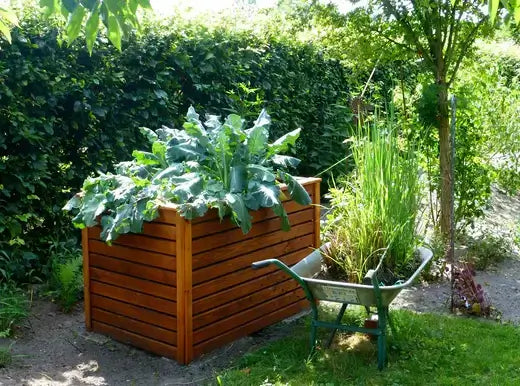Garden beds have gained popularity among gardeners and homeowners due to their numerous benefits
These elevated planters offer a range of advantages over traditional in-ground gardening, such as better soil control, improved drainage, reduced weed growth, and easier access for planting, maintaining, and harvesting crops. Let's delve into the expert opinions on raised garden beds and why they are often recommended.
Improved Soil Quality: Experts agree that using high-quality soil mixtures, such as compost, peat moss, and vermiculite, ensures better drainage, aeration, and nutrient availability for plants. This enriched soil provides an optimal growing environment for vegetables, herbs, flowers, and other plants.
Enhanced Drainage: Poor drainage can harm plant health, leading to root rot and other water-related issues. Raised garden beds offer excellent drainage compared to traditional gardens. The elevated structure prevents waterlogging and drains excess water, preventing waterlogged roots and fostering healthy plant growth.
Weed Suppression: Weeds are a common nuisance in gardens, competing with plants for nutrients, water, and sunlight. Experts often highlight the weed suppression benefits of raised garden beds. By creating a defined growing space above ground level, raised beds make it harder for weeds to infiltrate.
Additionally, proper mulching techniques, such as using straw or wood chips, further inhibit weed growth, reducing the need for manual weeding.
Pest and Disease Control: Raised garden beds can protect against pests and diseases. The contained structure and elevated design act as a physical barrier, making accessing the plants more difficult for specific problems.
Additionally, experts recommend practicing crop rotation and companion planting strategies within the beds to deter pests and reduce the risk of diseases.
Accessibility and Ergonomics: Another significant advantage of raised garden beds is their accessibility. Their elevated design allows easier access to plants, reducing the need for bending or kneeling during planting, weeding, and harvesting.
This feature benefits individuals with physical limitations, making gardening more enjoyable and manageable for people of all ages and abilities.
Extended Growing Season: Raised garden beds tend to warm quickly in the spring, allowing for an extended growing season. The elevated soil absorbs heat more efficiently, helping plants to establish and thrive earlier in the season. It can be advantageous for growing frost-sensitive crops in colder climates and even for starting seedlings indoors earlier.
Aesthetic Appeal and Landscaping: Raised garden beds add visual pleasure and structure to outdoor space. Experts often emphasize their ability to transform an ordinary yard into an aesthetically pleasing landscape. Raised beds can be designed in various shapes, sizes, and materials, allowing gardeners to create unique and attractive focal points.
While raised garden beds offer many benefits, it is essential to note that they also require proper planning and maintenance. Regular watering, monitoring of soil moisture levels, and occasional soil amendment are necessary to ensure optimal plant growth and productivity.
However, experts' consensus is that raised garden beds are a great addition to any garden.
It provides a range of advantages that can enhance gardening experiences and yield healthy, thriving plants.
